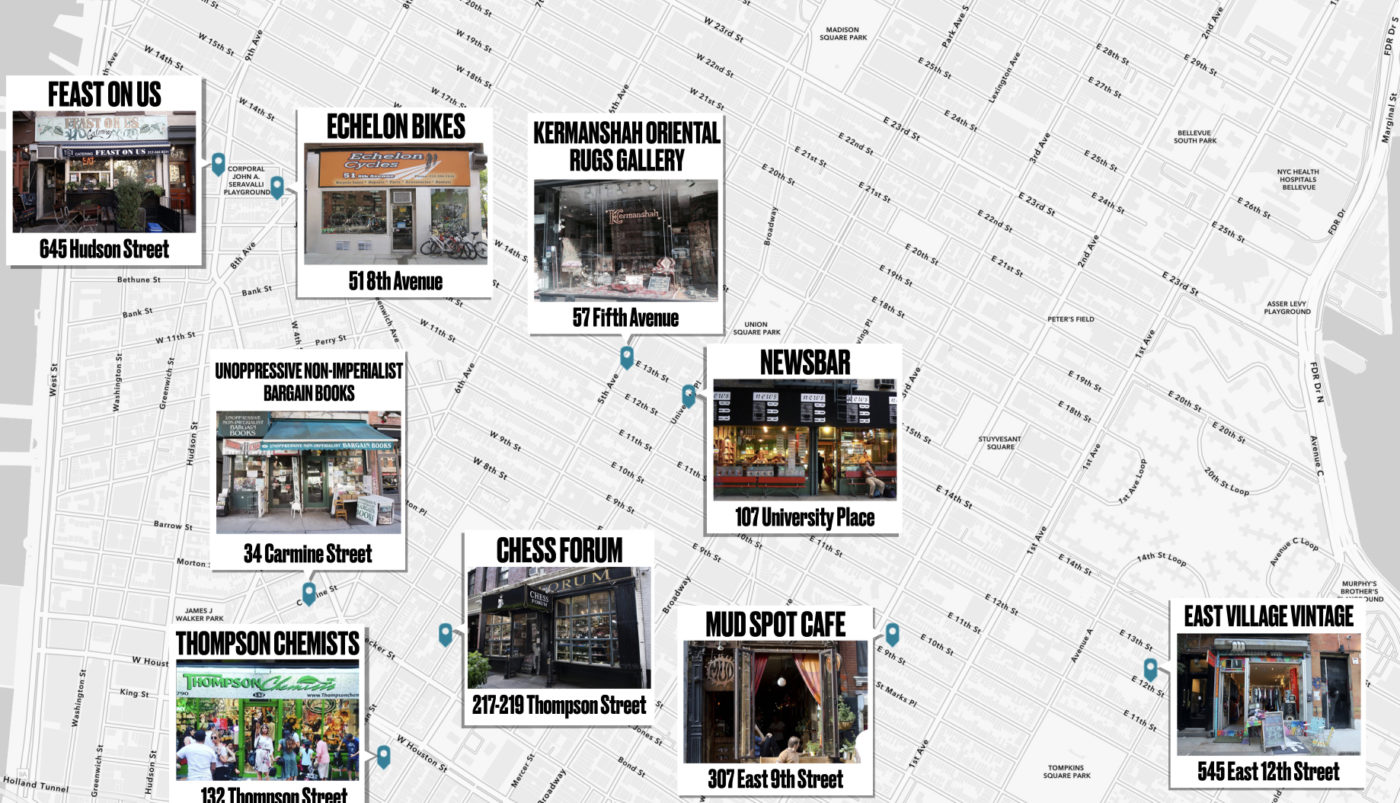Small Businesses Meeting the Challenges of Today
Some of our favorite local small businesses were recently prominently featured in the New York Times. Longtime neighborhood anchors Veselka (‘rainbow’ in Ukrainian) and (the former) Dinosaur Hill were the focus of a long form article that many people shared with me. The latter is closing as a result of a well-earned retirement, while the former is expanding (again) on East 9th Street off Second Avenue. And in a weekly section that features notable New Yorkers and their Sunday Routine, one of our Business of the Month awardees was mentioned as a go-to spot.
The well-circulated NYTimes piece was not only a tale of two small businesses, but the East Village and a changing New York: “The Bittersweet Tale of a Diner, a Toy Shop and a Changing New York One is expanding. One is closing. But not all is lost.“

In the same paper, the comings and goings of West Village resident and Peleton Co-Founder John Foley was highlighted in the Sunday Routine section. I could not miss the mention of one of his (and our) favorites — Bus Stop Cafe at 597 Hudson Street, where he and his family get strawberry pancakes and an egg white omelet. You could read more about this great place for food, and a few words on its history, from Proprietor Georgia Damalis here at their Business of the Month announcement..

And we continue to add new local independent businesses to our “Small Business/Big History” signage program, in which we are partnering with great local businesses to promote neighborhood history and the wonderful services and products they offer. Some of the latest local shops where you can find these decorative and informative window pieces include Vidov Salon West, located in one of my favorite buildings in Greenwich Village at 102 Charles Street. Local resident Olga Vidoz opened her first salon on nearby Hudson Street in 1983, and now operates on Charles Street with her daughter and team.

The sign tells some of the rich history of this location:
“This structure was originally built as a house for accountant Samuel D. Chase. Within a year of construction, however, it was sold to the city for use as a firehouse, which it remained into the late 20th century. In 1855, firefighting was still an entirely volunteer activity in New York City, and a new volunteer fire company had just been organized for duty between Leonard and 22nd Streets. The City wished to house it next to the new 9th Police Precinct station at 100 Charles Street (demolished), where reports of chimney fires were received.”

“Known as the Columbia Hook and Ladder Company No. 14, it operated here from 1857 to 1865, when the City created its first paid professional Fire Department. It then became the firehouse of Hook and Ladder Company No. 5. One of the oldest surviving firehouse structures in Greenwich Village and all of New York City, and it also one of the few survivors from the pre-FDNY (then known as the Metropolitan Fire Department) era. In 1969, 102 Charles Street was landmarked along with more than 2,200 other buildings as part of the Greenwich Village Historic District, still the city’s largest and one of its oldest historic districts.”
Another recent addition to the “Small Business. Big History” signage program is 232 Bleecker Street.

Our signage tells the history of this local food place that features seasonal American food, mostly vegetables:
“This six story tenement with commercial ground floor stretches between 6th Avenue and Carmine Street. It was designed by Michael Bernstein for Max Weinstein in the Renaissance Revival style. Constructed at a time when developers were replacing many of the area‘s smaller structures, this multiple dwelling had 25 apartments to house the growing working-class and immigrant population of Greenwich Village.”

“Bleecker Street’s name comes from Bleecker Street’s name comes from the Bleecker family, prominent New Yorkers of the time who owned farmland here. While some sources credit Anthony Bleecker as the street’s namesake, others cite his father, Anthony Lispenard Bleecker. The original Bleecker Street ran from the Bowery to Broadway, and was the northern border of the Bleecker farm. The nearby congregation of Our Lady of Pompei got its start in 1892, and by 1895 was serving thousands of Roman Catholics at a church building at 210 Bleecker Street across the street from here. Father Demo arrived in 1896 to a growing congregation of Italian immigrants, who had recently begun their great wave of migration to the city.”

Another of our Businesses of the Month awardees is part of the Small Business, Big History initiative — Love Child. From its birth as a pop-up yoga speakeasy downstairs at 1 Horatio Street, Love Child has grown up to be a one-of-a-kind model for holistic support from preconception to pregnancy, postpartum and beyond. They are much more than a yoga studio, and while their physical location remains closed, they are offering all their classes via live-stream and as on demand videos.

Use the map below for all the “Small Business/Big History” spots (we’re adding more every day!), and while you’re learning some great history, do some shopping or make a purchase at a local independent business that supports preservation and is proud of neighborhood history.

